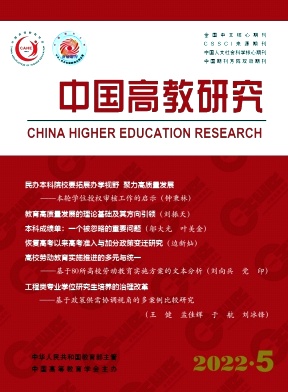Undergraduate Education
ZHAO Tingting; GUO Yuting
Traditional transcripts have the limitations of not being able to show the whole learning experiences and outcomes of students, failing to demonstrate student abilities well, having weak extension in time and space, not being able to generate and create learning, and not being able to truly reflect students’ individuality, etc. After the 1980s, digital technology has greatly advanced traditional transcripts reform, with electronic portfolios, digital badges, and comprehensive learner record being the three main practices. Based on the analysis of their backgrounds, processes, contents and impacts of the reform, and the analysis of each practice in terms of recording, expression and evaluation of university students’ learning. It can be seen that digital technology has reshaped the “profile” of university students’ learning, making it develop into a multi-dimensional “comprehensive profile” in space, time, content and form, and behind it is the change of teaching concept and teaching mode.
